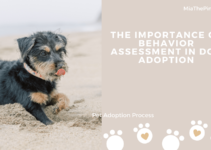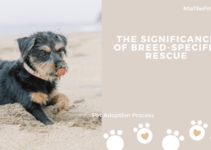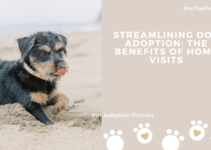The Importance of a Comprehensive Adoption Application
Adopting a dog is a life-changing decision that requires careful consideration and planning. To ensure that dogs find their forever homes and potential adopters find the perfect furry companion, a comprehensive adoption application plays a vital role. This application serves as a crucial tool for shelters and rescue organizations to gather essential information about potential adopters and match them with suitable dogs.
What to Include in an Adoption Application
An effective adoption application should gather detailed information about the potential adopter’s lifestyle, living situation, and preferences. It should include questions about the adopter’s experience with dogs, their work schedule, the presence of other pets or children in the household, and their expectations from the adoption process. Additionally, the application should inquire about the adopter’s commitment to providing proper care, training, and medical attention for their new furry friend.
Streamlining the Application Process for Potential Adopters
While the adoption application is crucial, it should not be overwhelming or discouraging for potential adopters. Streamlining the application process can help alleviate any unnecessary stress and increase the chances of successful adoptions. This can be achieved by making the application easily accessible online, providing clear instructions, and avoiding redundant or intrusive questions. The goal is to create a user-friendly experience that encourages potential adopters to complete the application confidently.
Tips for Designing a User-Friendly Adoption Application
Designing an adoption application that is user-friendly requires careful attention to detail. Here are some tips to consider:
- Use a clear and concise language to ensure understanding.
- Break down the application into sections or categories to make it more manageable.
- Include space for potential adopters to provide additional information or express their preferences.
- Consider using checkboxes or multiple-choice questions to simplify the process.
- Provide contact information or a support system for potential adopters to seek assistance or clarification.
Ensuring the Application Process is Efficient and Effective
Efficiency and effectiveness are key to a successful adoption application process. Shelters and rescue organizations should establish a streamlined workflow to promptly review and process applications. This involves assigning dedicated staff or volunteers to handle applications, conducting thorough background checks, and contacting references provided by potential adopters. By ensuring a smooth and efficient process, shelters can minimize waiting times and increase the chances of finding the perfect match for both the dog and the adopter.
Common Challenges in the Adoption Application Process and How to Overcome Them
While adoption applications are essential, they can present challenges that need to be addressed. Some common challenges include incomplete applications, difficulty in contacting references, or potential adopters not meeting the requirements for certain dogs. To overcome these challenges, shelters can implement strategies such as providing clear instructions and guidelines, offering support and guidance to potential adopters, and maintaining open lines of communication. By addressing these challenges, shelters can ensure a smoother application process and increase the likelihood of successful adoptions.
FAQs
What is the purpose of a comprehensive adoption application?
A comprehensive adoption application serves as a crucial tool for shelters and rescue organizations to gather essential information about potential adopters and match them with suitable dogs.
What information should be included in an adoption application?
An effective adoption application should gather detailed information about the potential adopter’s lifestyle, living situation, and preferences. It should include questions about the adopter’s experience with dogs, their work schedule, the presence of other pets or children in the household, and their expectations from the adoption process. Additionally, the application should inquire about the adopter’s commitment to providing proper care, training, and medical attention for their new furry friend.
How can the adoption application process be made user-friendly?
Streamlining the application process can help alleviate any unnecessary stress and increase the chances of successful adoptions. This can be achieved by making the application easily accessible online, providing clear instructions, and avoiding redundant or intrusive questions. The goal is to create a user-friendly experience that encourages potential adopters to complete the application confidently.
What tips should be considered when designing a user-friendly adoption application?
When designing a user-friendly adoption application, it is important to use clear and concise language, break down the application into sections or categories, include space for potential adopters to provide additional information or express their preferences, consider using checkboxes or multiple-choice questions, and provide contact information or a support system for potential adopters to seek assistance or clarification.
How can the adoption application process be made efficient and effective?
To ensure an efficient and effective adoption application process, shelters and rescue organizations should establish a streamlined workflow by assigning dedicated staff or volunteers to handle applications, conducting thorough background checks, and contacting references provided by potential adopters. By ensuring a smooth and efficient process, shelters can minimize waiting times and increase the chances of finding the perfect match for both the dog and the adopter.



